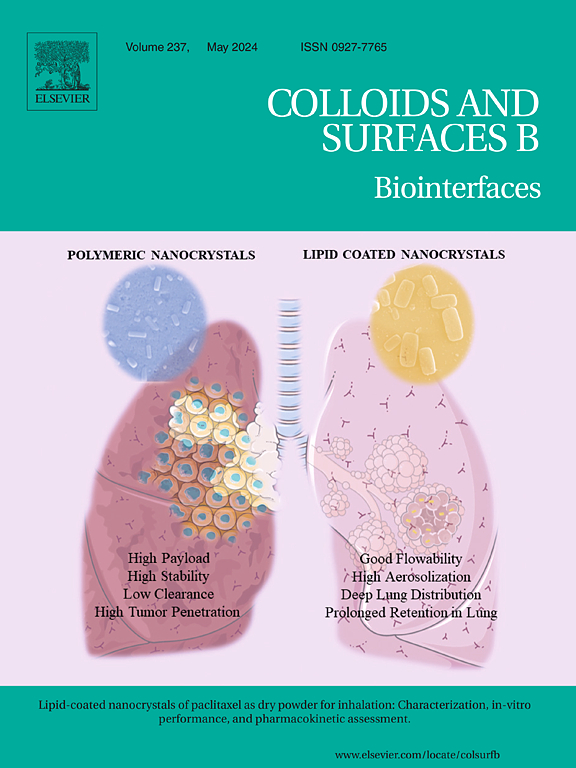A glycopeptide-based pH-responsive hydrogel promotes diabetic wound healing via antimicrobial and remodeling microenvironment
IF 5.4
2区 医学
Q1 BIOPHYSICS
引用次数: 0
Abstract
Treating bacterium-infected diabetic wounds remains a major medical challenge. Antimicrobial activity, remodeling of oxidative stress-heavy and angiogenesis-impaired microenvironments are critical factors for effective wound healing. Hydrogels can function as drug delivery systems that encompass all these capabilities to enhance wound healing. In this study, we developed a glycopeptide-based hydrogel (DA/bF@OD-PL) composed of oxidized dextran (OD), polylysine (PL), dopamine (DA), and basic fibroblast growth factor (bF). This hydrogel exhibits excellent structural integrity, injectability, adhesion properties, swelling capacity, and degradability. Notably, the hydrogel is responsive to acidic conditions due to the presence of Schiff base bonds, enabling it to respond to the acidic environment characteristic of bacterium-infected wounds and release its encapsulated drugs accordingly. Among these components, PL has a strong antibacterial effect and can easily kill S. aureus and E. coli. DA effectively scavenges multiple reactive oxygen species (ROS) and induces macrophage polarization to M2 macrophages to alleviate oxidative stress. bF upregulates the expression of CD31 and vascular endothelial growth factor (VEGF) to promote angiogenesis. Finally, we validated the ability of this hydrogel to promote rapid wound healing in an S. aureus-infected diabetic mouse wound model.
求助全文
约1分钟内获得全文
求助全文
来源期刊

Colloids and Surfaces B: Biointerfaces
生物-材料科学:生物材料
CiteScore
11.10
自引率
3.40%
发文量
730
审稿时长
42 days
期刊介绍:
Colloids and Surfaces B: Biointerfaces is an international journal devoted to fundamental and applied research on colloid and interfacial phenomena in relation to systems of biological origin, having particular relevance to the medical, pharmaceutical, biotechnological, food and cosmetic fields.
Submissions that: (1) deal solely with biological phenomena and do not describe the physico-chemical or colloid-chemical background and/or mechanism of the phenomena, and (2) deal solely with colloid/interfacial phenomena and do not have appropriate biological content or relevance, are outside the scope of the journal and will not be considered for publication.
The journal publishes regular research papers, reviews, short communications and invited perspective articles, called BioInterface Perspectives. The BioInterface Perspective provide researchers the opportunity to review their own work, as well as provide insight into the work of others that inspired and influenced the author. Regular articles should have a maximum total length of 6,000 words. In addition, a (combined) maximum of 8 normal-sized figures and/or tables is allowed (so for instance 3 tables and 5 figures). For multiple-panel figures each set of two panels equates to one figure. Short communications should not exceed half of the above. It is required to give on the article cover page a short statistical summary of the article listing the total number of words and tables/figures.
 求助内容:
求助内容: 应助结果提醒方式:
应助结果提醒方式:


